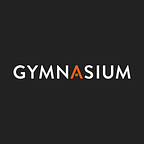Approaches to Successful Rapid Prototyping
Industry Experts Discuss Their Experiences
We at Aquent Gymnasium recently hosted a webinar, Right-Sizing your Rapid Prototypes for Web and Mobile, featuring Erin Young of Slide UX and her client Tracey Singleton. Led by our Academic Director Jeremy Osborn, the discussion touched on a number of topics ranging from the evolution of the prototype to a real-life prototyping case study.
Although the entire webinar is worth a watch, here are 4 major insights:
1. Prototypes, particularly those produced from wireframes, are useful in terms of eliciting user feedback on usability, subject matter, and flow — without stylistic preferences coming into play.
2. When prototyping, it can be helpful to stay in flat design (a minimalist interface) for as long as possible. This can potentially simplify the process by eliminating the need to continually create new versions of the prototype throughout the duration of the project.
3. It is vital to keep your audience and their needs in mind when designing prototypes. For example, you’d probably want to show your stakeholders a happy path scenario, not the error states.
Last, but certainly not least, is what we consider to be the most important point to keep in mind when prototyping:
4. While prototypes have value, they also have an expiration date! View them as disposable artifacts, especially in situations where you find yourself struggling to maintain them.
Watch the full event recording to get the full scoop.
Thanks to Milo Goodman for contributing to this blog post.
